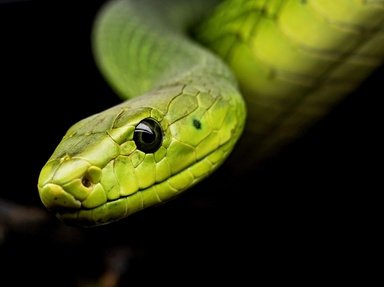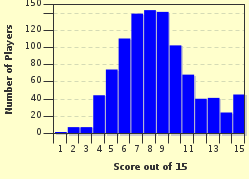Quiz Answer Key and Fun Facts
1. What is the fear of snakes called?
2. Where would you find the Jacobson's organ?
3. How do snakes normally eat their large prey?
4. What is the glottis?
5. Which of these snakes is the smallest snake in the world?
6. Some snakes have remnants of their back limbs.
7. Which of these colours is a juvenile green tree python NOT coloured at birth?
8. Snakes species are roughly divided into about 11 families, but out of those 11 families the majority of snakes will fall into one of the 4 more common families.
What family does the cobra belong to?
9. What snake family CANNOT be found in Australia?
10. What family does the boas belong to?
11. Two favourite pet snakes in the United States are the king snake and the garter snake. What family do these snakes belong to?
12. Which of these snakes are you LEAST likely to have as a normal household pet?
13. What type of movement would a tree dwelling snake commonly use?
14. One of these facts is INCORRECT? Which one?
15. And finally, safety, a snake will not attack you unless it feels threatened, cornered or provoked. If a snake crosses your path, just leave it alone, it should keep going.
But what if you or another person are bitten by a snake (especially a venomous one)? Only one of the following statements is CORRECT, which one?
Source: Author
Lssah
This quiz was reviewed by FunTrivia editor
crisw before going online.
Any errors found in FunTrivia content are routinely corrected through our feedback system.

